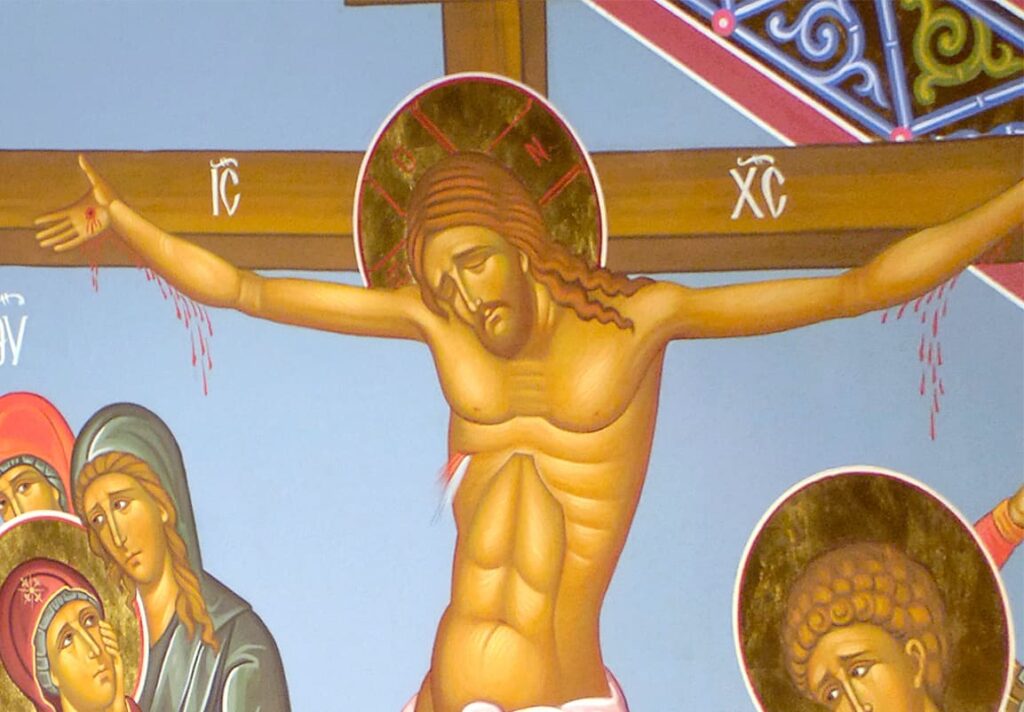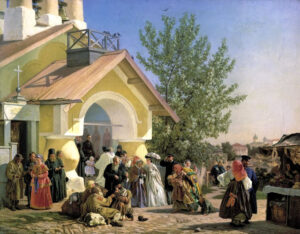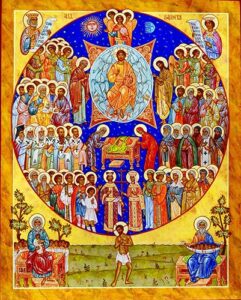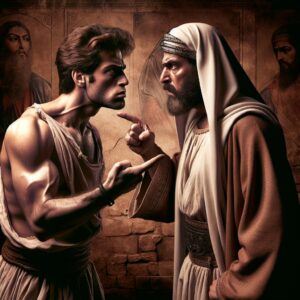by Reader Daniel Manzuk
After years of listening to the 12 Gospels on Holy Thursday night – and especially when the Gospel portions were combined in the composite Gospel at Vespers on Good Friday – it seemed like the Evangelists couldn’t agree on what Christ did right before He died.
Matthew and Mark seem to agree, but Luke says something else and John something other than that. But, I have learned, this is not a cause for a crisis of faith, or to doubt the truth of the Bible or anything like that. Their seeming lack of consensus is a natural product of differing contexts and points of emphasis. In addition to more firmly establishing that something happened, or that something was said, multiple eyewitnesses are sought because they may notice or emphasize different things, all of which can help give a clear picture of what they witnessed.
The Church had innumerable “Gospels” to sift through when the final canon of the Bible was compiled in the 4th century. These included the heretical “Gospels” of St. Thomas, Judas, Mary Magdalene and others that spurious scholars and conspiracy theorists call the “lost” books of the Bible; when, in actuality, they are ‘The Books Denied Inclusion into the Bible’. They were rejected because they did not comply with the consensus of both Testaments and Holy Tradition, of which true ones are part. But that’s a whole different article.
The four Gospels we know were selected for the very reason that they had different points of emphasis for different audiences. St. Mark wrote to Hellenist Jews in Alexandria in the immediate aftermath of the Fall of Jerusalem. St. Matthew wrote years later to Jews in Palestine.
St. Luke wrote to his Gentile friend Theophilos. St. John wrote to the whole Church. These differing points of emphasis can be seen in the ‘Synoptic Gospels’, where Mark, Matthew and Luke mention the same events and discourses, but often with differing details. They aren’t changing Christ’s life, they are emphasizing the details necessary to make their point. If the Evangelists had included every detail in each of their Gospels, as St. John said, “I suppose that even the world itself could not contain the books that would be written.” (21:25)
What follows below is a humble attempt to clarify the timeline of Christ’s death from the moment He is crucified.
When Christ is first crucified, Ss. Matthew and Mark agree that He was offered mingled wine (gall/myrrh) but, would not drink it (Matt.27:34; Mk.15:23); for a very good reason, as shall be seen. During which time the soldiers were casting lots for His garments. Along with the charge over His head,
the dividing of His garments at this point is something on which all the Evangelists concur. It is also at this point that, according to St. Luke, Christ implored, “Father, forgive them, for they do not know what they do” (Lk.23:34).
Ss. Matthew and Mark concur that both robbers reviled Christ (Mt.27:34; Mk.15:32). Yet St. Luke gives the account of the Wise Thief (Lk.23:39-43). In all probability, when he was first hanged on his cross the Thief probably did revile Christ along with everyone else; figuring He deserved it. But seeing Christ hanging there, it is probable that – like the Prodigal Son – he came to himself, realized Who Christ was and made his saving confession.
All the Gospels concur that Christ was crucified at about the 6th Hour (noon) and the Synoptics concur that He died at about the 9th Hour (3pm) – the time at which the Old Testament Paschal lambs were slain in the temple so the people could get them home for the Paschal/Passover meal before Passover started at sundown (St. John doesn’t mention Christ’s time of death). It is for this reason that the concluding prayer at the Sixth and Ninth Hours (and the troparia in the Lenten versions of these services) have such strong crucifixion imagery; and why Vespers on Good Friday ideally starts at 3pm.
At some point – probably near the end – of this three-hour block, Christ adopted St. John to His Mother and vice versa (Jn.19:25-27); as Mary had no children to care for her. This passage reinforces the fact that the ‘Brothers’ of the Lord were His stepbrothers. Regardless of danger to themselves, if they were Mary’s sons it would’ve been unconscionable for them to leave their widowed mother alone and unsupported with the death of her First- born. Obedient to His own law to the end (Exodus 20:12), Christ would not finish His earthly work without making sure His Mother was taken care of.
As we reach the Ninth Hour Christ, in a moment of genuine human agony cries, “My God, My God, why hast Thou forsaken Me?” (Mt.27:46; Mk 15;34, Psalm 22:1). It is at this point that sour wine is again offered to Him, but this time everything has been accomplished so Christ accepts it saying, “It is finished!*” (Jn.19:30; *or better ‘consummated’); all His earthly work was done. Ss. Matthew and Mark agree that Christ cried out a last time; this cry was, “Father, into Thy hands I commit My spirit” (Lk.23:46). With this He breathed His last and His temple and all creation convulsed at His death.
A difference in emphasis does not mean disagreement. Despite the differences, the accounts gel quite well in describing the final moments before Christ’s death.





